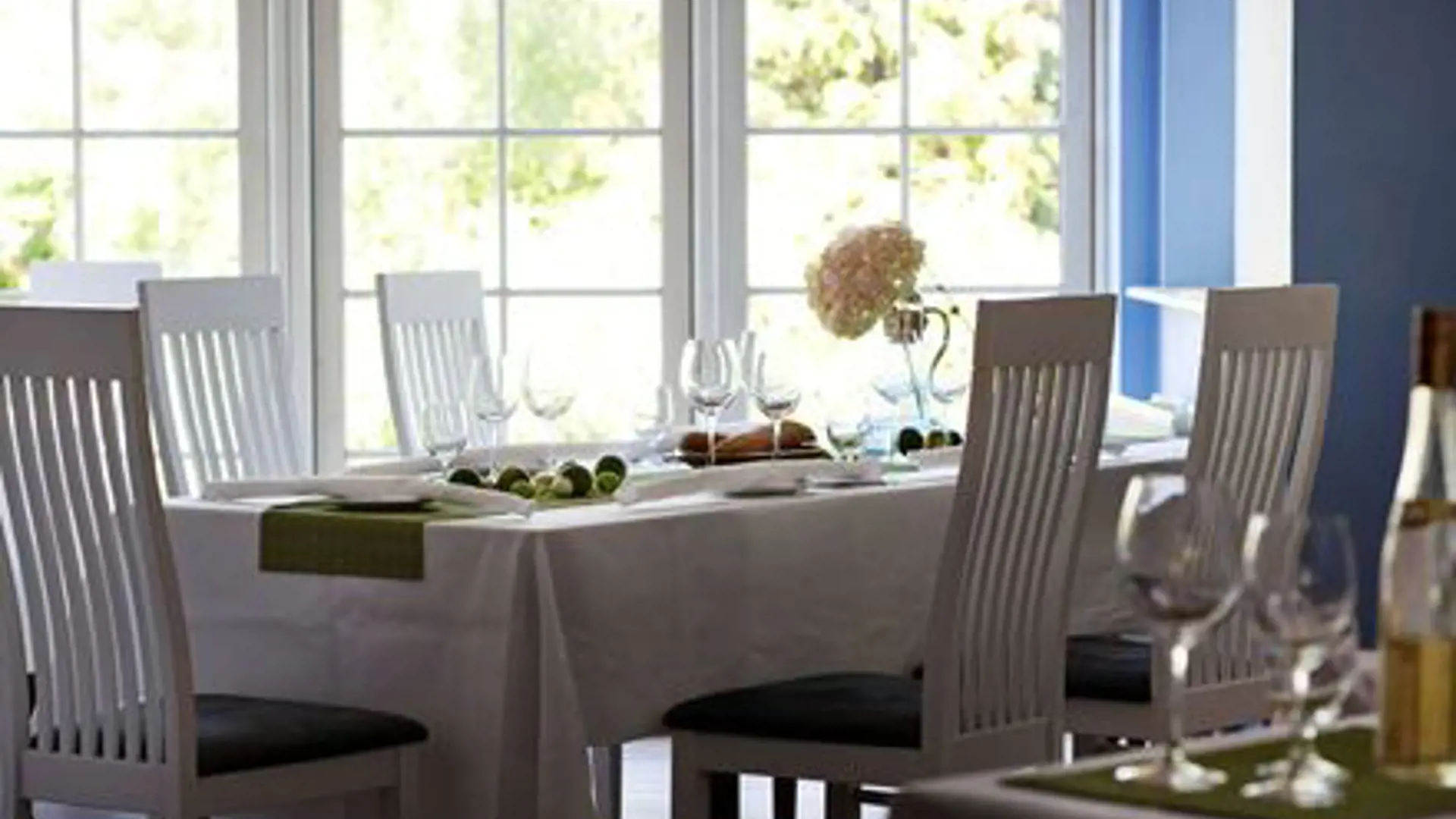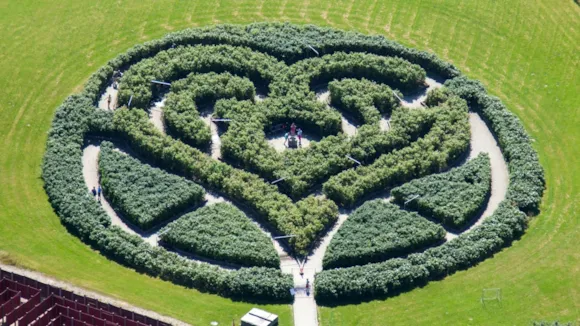Includes per person per night:
- Welcoming drink
- 2-course surprice menu
- Overnight accommodation
- Breakfast buffet
4.30709875165772 of 5 Stars

Includes per person per night:
Click the "See calendar and prices" button to choose dates and see the room selection.
See calendar and prices: Inn stayLåsbyvej 122, 8660, 8660 Skanderborg
Show map

Includes per person per stay:

Includes per person per night:

Includes per person per night:

Minimum 3 days/2 nights
Includes per person per night:

Includes per person per night:

Includes per person per night:

Minimum 3 days / 2 nights
Includes per person per night:

Oplevelsesgavekort med Produktid: 25021549
Inkluderer for 2 personer:

Oplevelsesgavekort med Produktid: 25010849
Inkluderer for 2 personer:

Oplevelsesgavekort med Produktid: 25031648
Inkluderer for 2 personer:

10.45 km
Until the mid-19th century, Himmelbjerget was perceived as the highest point in Denmark. With its 147 meters above sea level, the legendary Himmelbjerg is certainly an impressive giant, and the steep hill down to the beautiful Julsø adds to the mountain romance.
At the top of Himmelbjerget stands the Himmelbjerg Tower, which is 25 meters high and was erected as a memorial to King Frederik VII, who on June 5, 1849, gave the Danish people their free constitution.
However, it is not only from the top of Himmelbjerget that you can enjoy a fantastic view. The forests south of the mountain hide several amazing viewpoints and good opportunities to get away from the lively visitor areas.
The area around Himmelbjerget has a large and diverse trail system, where you can take shorter walks or combine several routes to create longer ones. You can get a good overview of the marked hiking trails in the Nature Agency's brochure on Himmelbjerget, Sletten, and Slåensø.
Visit BestigBjerge.dk, embark on the 52 km long Himmelbjergrute around the lakes, or be inspired by the many other outdoor activities in the Lake Distirct here.
The name Himmelbjerget appears in writing as early as the beginning of the 18th century when a dramatic wolf hunt was held on the mountain. It is, therefore, an old local place name and not a romantic term introduced by the first tourists.
Himmelbjerget has been a popular destination for generations, and already in the late 1830s, the poet priest St. St. Blicher made the mountain famous as the setting for his folk meetings. Nowadays, people still meet on the mountain to celebrate democracy and the constitution. Landscape painters spread knowledge of the place's beauties through their depictions of hills, forests, and views. Then came beer stalls, pavilions, hotels, ice cream kiosks, and souvenir shops.
By studying the memorials on Himmelbjerget, you can also gain insight into how the Constitution of the Danish Realm came about – and even get the story in your ear as a podcast. For example, read and hear more about St. St. Blicher's memorial on Himmelbjerget, or read more about Kvinde Egen, which was planted in 1915.
According to Norse mythology, Himmelbjerget is the highest mountain in the gods' world, known as Asgard. According to the myth, the god Heimdal lives on Himmelbjerget and guards Asgard at the end of the rainbow Bifrost, to prevent giants from sneaking in.
Combine the experience with a trip on one of the Hjejle boats, as has been customary since 1861.
Since 1861, the Hjejle Company has been sailing tourists to Himmelbjerget. Therefore, souvenir stalls have also existed on the site since the 1800s. At that time, it was an offshoot of the local area's wooden shoe production, where the wooden shoe boys carved small figures and "Himmelbjerg sticks," which were sold to tourists.
See sailing times and buy tickets here.
With modern measuring instruments, it has been determined that Møllehøj (170.86), Yding Skovhøj (170.77), and Ejer Bavnehøj (170.35) are the highest points in Denmark - and they are all located in the Søhøjlandet region.
Read more about the 'hills' here.

10.65 km
The mill at Gammel Rye was built in 1872 on a hill at the edge of the village. It was a working mill right up to the mid 1980s. Today the mill is exactly as it was when the miller left it, and when the mill is running, it is possible to see how grain was milled in the old days.
In the Middle Ages, the town was an important centre for trade and pilgrimage. The town prospered on several annual market days, and from the shrine of saint Severinus (St. Søren). In medieval times, the town had its own jurisdiction and outlaws were executed on the gibbet hill outside the town. A female skeleton from the gibbet hill is on display in the museum.
In the late 16th century a national glass production was established in Glarbo (glar means glass). It only lasted a few decades but produced renaissance glass of which some is on display in the exhibition.
A considerable clog industry developed in the Gl. Rye area in the 19th century. In those days, more than 186.000 pairs of clogs were sold per year. In every other house in the village, a clogmaker lived producing several pairs of clogs a day. In the museum's exhibition, you can see the tools of the clogmaker and how clogs were produced.
The museum also houses a collection of the original wooden Himmelbjerg souvenirs. These local handicraft products from the turn of the 20th century are a by-product of the clog industry.
In 1935, an airfield was established south of Gl. Rye. During the occupation of the Second World War, a German airbase was established at the airfield and after the war, it was rebuilt into a refugee camp for 12.000 German refugees, mainly from East Prussia. The museum houses an exhibition based on the life of the German refugees in the years 1945-48.

13.81 km
The lake is located in extremely hilly terrain. It is a popular destination with Kongestolen (the king’s seat) (82 m high) immediately south of Lake Slåensø, which offers wonderful views to the north. Closeby is Denmark’s tallest tree, a Douglas fir which is more than 50 m high. There is a good rambling trail all the way around the lake.

14.98 km
The area called Ejer Mountains is characterized by idyllic villages dotted between forests and farmland, connected by narrow, winding roads in undulating countryside. The area is a good place for a bicycle ride, and you are guaranteed a sweaty brow.
Up here in the thin air, you will pass Denmark’s highest points. The top of Yding Skovhøj is found at an altitude of 172,54 metres above sea level. When you are on your bike the hill rises 85 metres from the bottom to the top, but if you want to reach the summit, you will have to get off the iron horse and enter Yding Forest. From here you go for a hefty but short climb to the summit where Denmark’s highest point awaits.
It has been widely discussed over the centuries. What is actually Denmark's highest point? Over time, several different points have held the title but, as the means of measurement have become more precise, it is now possible to measure heights down to a one-centimetre accuracy. So, today there should be no doubt, right?
In fact, discussions are still ongoing as to which hilltop should hold the honourable title. There are several hilltops in the uplands north of Horsens the height of which vary by only a few centimetres.
There are three Bronze Age burial mounds at the top of Yding Skovhøj. The top of the centre one measures 172.54 metres above sea level. This is more than 1 metre higher than Denmark’s second-highest point. Critics argue, however, that the Bronze Age burial mounds are man-made and, therefore, not natural. According to this approach, they should not be included in the measurement.
In that case, Yding Skovhøj is a mere 9 centimetres short of the title of the highest point of our kingdom. In other words, whether Yding Skovhøj deserves the honourable title is a subjective assessment.
What do you think?
Yding Skovhøj is located in the southern outskirts of the Danish Lakelands, very close to the river Gudenå.
Not far from here is the Sugar Loaf (Sukkertoppen). The Sugar Loaf is a hill that - because of its height of a mere 105 metres - is dwarfed by Yding Skovhøj. However, the views are magnificent and among the absolute best in Denmark. From the top you have views of the most beautiful part of the Gudenå area which is the area around Mossø. At the base of the Sugar Loaf, you find the idyllic Klostermølle which, besides the historic buildings – including Denmark's longest wooden building, has a beautiful view at the end of Mossø.
And you are only about five kilometres from the Uncovered Bridge (Den Genfundne Bro) – a culturehistoric gem in beautiful nature, and the biggest attraction in the area.
Follow this link to find breath-taking views in Kystlandet.

16.36 km
From the top of Ejer Bavnehøj is a magnificent view over a unique moraine landscape developed in the latter part of third ice age. Here the ice borderline of the east of Jutland is very clear. The ice flowed around the high plateau of Ejer. In bright weather it's possible to see the island of Samsø, and even the bridge over Lillebælt 50 kilometres away.
Until 1847 people thought that Himmelbjerget ("Sky Mountain") was the highest point in Denmark, but it's only 147 metres above sea. At that time Ejer Baunehøj was declared to be higher, and in 1874 it was measured to be 170.95 metres above sea level. Nevertheless Yding Skovhøj, only 3 kilometres away, was declared to be even higher, due to several new measurements in the middle of the 1900's. This was a great disappointment for people involved in Ejer Baunehøj.
The Danish authorities finally decided in 1953 that a burial mound on Yding Skovhøj from the bronze age didn't count. That reduced Yding Skovhøj to 170.89 metres, and means that Ejer Baunehøj wins this height competition by only 6 centimetres!In 2002 the heights were adjusted due to the new general measure method DVR90. Ejer Baunehøj has sunk 6 centimetres to now 170.89 metres, but the same applies to Yding Skovhøj measured at 170.83 metres.
Nevertheless, the battle of heights took a dramatic turn in February 2005. A panel of experts selected as referees in the battle proclaimed their winner. The panel, made up of a geography professor, an archaeologist, and an office head at Denmark’s National Geographical Survey, determined that Denmark’s highest point, measuring in at a height of 170.86 metres is Møllehøj (Mill Top).
The winner came in exactly nine centimetres higher than the second highest point, Rodebuske in Yding Skov, and 51 centimetres higher than the third highest, Ejer Bavnehøj. But Møllehøj is located only 200 metres west of Ejer Bavnehøj on an ordinary field belonging to a farmer. There is only a minor slope between the two tops. According to the international principle of primary factors they are defined as one complete top.

17.2 km
Today Labyrinthia has 8 different mazes/labyrinths – plus one for DOGS, and a large indoor “Puzzle Center” with many different games and brainteasers. There is something for everyone. You don’t have to queue up, and the pace – that’s up to you.
The Football Race Maze is a competition maze for all football wizards. Have a look and see what it’s all about, and compete with your family or friends to see who is best.
In the 3D-Maze you can test and challenge your sense of orientation. Download the free Labyrinthia App and scan the 8 QR codes in the 3D-Maze. Then you can download a certificate to your cell phone, so you can prove you've solved it.
You can also enjoy the sight and the scent of the hundreds of beautiful roses in the water maze (and perhaps become a bit wet!). If you download the free App, you can control the water gates in the water maze from your smartphone.
In the Dog Maze you can test the sense of orientation and sense of smell of your dog – and there is even a “doggy pub” for the four-legged.
Inside, in the “Puzzle Center”, you can use your brains solving some of the 50 different games and brainteasers at the tables.
If you need to renew your energy upon all the challenges, you can buy food and other refreshments in the café. You are also welcome to bring your own packed lunch and enjoy it outside, under the pavilion roof or on the large terrace. There is also two large gas BBQ’s at your free disposal.
You can learn more about the history of mazes/labyrinths, and also try the two historic labyrinths – the Trojaborg (a Bronze Age pattern) and the Chartres (a Middle Ages pattern). Though they are two so-called “one-way labyrinths”, they have still got some magic.
Check Opening hours and prices here.

18.36 km
Inside, AQUA offers underwater experiences with panoramic views across large lakes, and fascinating exhibitions on the wildlife of the Danish lakes and water courses. You can discover ferocious pike through large, panoramic windows and follow the record giant catfish, which can easily swallow a whole duck. See also our otters up close when they catch fish under water.
Outside, you will find the AQUA park, which is home to our beloved beavers, otters, racoons, storks and lots of other animals. There is also a wilderness trail and a large water play area with water canons, sluices, paddling pool and other fun activities. The playground is fun for all ages. The playground consists of several activities in many heights, lock systems, gynger- and cable car, sandbox, etc. One thing is certain - remember changing clothes - you are sure to wet the playground of AQUA Aquarium & Wildlife Park.
Next to the playground is also large lunch area with barbecue facilities, Café bird table and toilets. Daily programme of activities, including animal feeding.

18.52 km
Almindsø is a very popular place to visit. The lake is surrounded by cozy forests and is also located close to the city of Silkeborg. Almindsø is characterized by its exciting flora and fauna, including 20 species of underwater plants and 450 species of aquatic animals.
On the south side of the lake, there are high cliffs with ochre-containing springs as well as the two tributaries Skade Bæk and Odder Bæk. However, most of the water supply comes from the connection to the groundwater in the bottom of the lake.
In addition to the Østre Søbad and Vestre Søbad, there are also several smaller bathing spots in Almindsø where you can jump into the water - for example, at the beach at Aggerholm, which was built by German soldiers stationed at the nearby German military headquarters in Silkeborg Bad during World War II.
Here, there is also the opportunity to buy access to a sauna, use changing rooms and toilet facilities, and jump into the water from the large, round bathing bridges. These are the latest additions to Almindsø, which make the lake even more worth seeing than it already was.
With a maximum depth of 20 meters, Almindsø is one of the deepest lakes in the Gudenå system, and there are approximately 4 kilometers around the lake, which invite you to a very beautiful walk, including the viewpoint Kroghs Bænk.
See the current water temperature here.

18.99 km
Hjejlen is the world’s oldest original coal-fired paddle steamer still in operation. Daily throughout the summer, Hjejlen and the other excursion boats in the Hjejle fleet sail from Silkeborg to Himmelbjerget and on to the small station town of Laven.
Over the years, s/s Hjejlen has been joined by eight ‘sisters’, each with their own history and charm. They are different from the paddle steamer Hjejlen and show the evolution of boatbuilding over time. Every summer, the Hjejlen fleet brings the scenic lakes to life, and it's exciting to combine the beautiful sailing on the different boats with lunch stops and experiences along the way.
The trip from Silkeborg to Himmelbjerget takes 1 hour and 15 minutes. Finally, you have the opportunity to experience the scenic Silkeborg lakes on an evening trip on board Hjejlen or one of the other boats.
View timetable on Hjejlen’s website here.

19.01 km
The Paper Museum is part of Museum Silkeborg and is a living museum where handmade paper is still produced and where you can experience the magical moment when the milky water mass suddenly becomes a sheet of paper. You can also explore an exhibition about Danish papermaking through the ages and about Silkeborg Paper Mill, as well as experience changing exhibitions related to paper production.
You can also visit the tower at the Paper Museum, where you can see Silkeborg from 70 metres above ground. The Paper Tower is located in the centre of the new Papirfabrikken district, where Silkeborg Paper Factory operated until 2000.
Get up the tower by booking a guide in advance.

19.5 km
The Uncovered Bridge is a cultural and historical gem and a rediscovered piece of Danish history – buried beneath an embankment for 85 years, it was excavated and restored in 2014. Today, it stands as an impressive example of industrial engineering – recreated in its original splendour.
When it was first built, the red steel lattice bridge was the tallest of its kind in the Nordic countries. Now, with railings and a wooden walkway, visitors can safely cross the bridge and enjoy stunning views over Denmark’s only river – the Gudenå.
Close to the bridge, you will find a large car park with plenty of space and access to picnic tables and benches – ideal for a cosy meal in green surroundings. Wheelchair users can access the bridge via a smooth asphalt path from the car park.
- Height: 13.4 metres
- Length: 50 metres
- Constructed: 1899
- Covered: 1929
- Uncovered: 2014
The bridge is located approximately 20 kilometres north of Horsens, between the villages of Vestbirk, Træden and Gammelstrup. The nearest car park is at Vestbirkvej 2A, Brædstrup, just 300 metres from the bridge. There is space for 85 cars – including two accessible spaces and two coach bays. A well-maintained path leads directly to the bridge.
Canoe: If you are paddling along the Gudenå, you can easily dock at the Vestbirk Hydroelectric Plant and take a short walk to the bridge.
Horseback: There is a ford just east of the bridge where riders can cross the Gudenå.
Bicycle: The Uncovered Bridge is part of the Nature Trail Horsens–Silkeborg, which follows the former Bryrup Railway between Horsens and Silkeborg. This 61-kilometre trail is paved and almost entirely traffic-free – perfect for cyclists, walkers and riders. The hilly terrain makes for an ideal multi-day adventure, with opportunities for overnight stays along the way.
The Uncovered Bridge welcomes visitors all year round, and it can be especially busy during holidays and weekends. Consider planning your visit during quieter periods – or combine it with other nearby experiences. The nature and culture of Bakkelandet are full of hidden gems well worth exploring.
On this page, you will find inspiration for nearby attractions and nature experiences.
There is no official walking route signposted around the Uncovered Bridge, but the bridge is part of the Nature Trail Horsens–Silkeborg. If you feel like stretching your legs, we recommend staying on the trail, as nearby country roads are narrow and lack pavements or cycle paths. If you walk 1.3 kilometres southeast along the trail, you will reach the Vestbirk Lakes, offering views of both Naldal Lake and Vestbirk Lake. A little further on, you will come to Nature Østbirk, a newer natural area.
Heading northwest, the trail continues all the way to Brædstrup (approx. 7 km), where you can enjoy a cup of coffee or lunch in the charming town centre.
If you would like to combine your visit to the Uncovered Bridge with the Vestbirk Hydroelectric Plant, you can drive to the plant’s car park – just 1 kilometre from the bridge car park. From there, it is only 600 metres to the plant along a scenic path beside the Gudenå.
There is no official hiking trail at The Uncovered Bridge that guides you on a marked circular route through the area. However, the bridge is part of the Horsens–Silkeborg Nature Trail, making it a great starting point for a walk. The surrounding country roads are quite narrow and lack sidewalks or bike lanes, so it is best to stick to the trail.
If you follow the trail 1.3 kilometers southeast through the forest, you will reach Vestbirk Lakes, offering a beautiful view over Naldal Lake and Vestbirk Lake. Continuing a few kilometers further will take you to the newly established Natur Østbirk.
Heading northwest instead, it is 7 kilometers to Brædstrup, where you can enjoy lunch or a cup of coffee in the newly renovated town center.
If you would like to combine your visit to The Uncovered Bridge with Vestbirk Hydroelectric Power Station, we recommend driving from the bridge to the power station’s parking lot (a 1-kilometer drive between the two parking areas). From there, it is a 600-meter walk along the Gudenå River to the power station.
Last updated on June 20, 2025 by Casper Terkelsen

20.17 km
We all love a good story. Would you like to be the main character of that story? As you make your way through this forest you can take part in the story by scanning QR-codes or by activating sensors with light and sound. Maybe the fairies are to blame. It is told that:
”One day at the dawn of time, God threw all the evil angels out of Heaven and down to Earth. The angels had sinned against God, but they could not all make it to Hell. They, therefore, fell down to earth in different places. Some fell onto farms and became farm dwellers – in other words nisse. Some fell on mounds and hills, and became mountain folk, gnomes or trolls. Those who fell in the sea became sea people. And finally, those who fell into bogs, upon meadows and in woods became elves or fairies”. BASED UPON THE LEGEND FROM KVÆRNDRUP, EVALD TANG KRISTENSEN DANISH LEGENDS, VOLUME 1, S. 3, 1.1
Come and learn more about the fun, mysterious and exciting legends and fairytales
Admission: 50 DKK per person. Children less than one year old can enter for free.
Feel free to contact Eventyrskoven if you are interested in using the facilities for a children’s birthday party or booking a witch or a troll for your party.